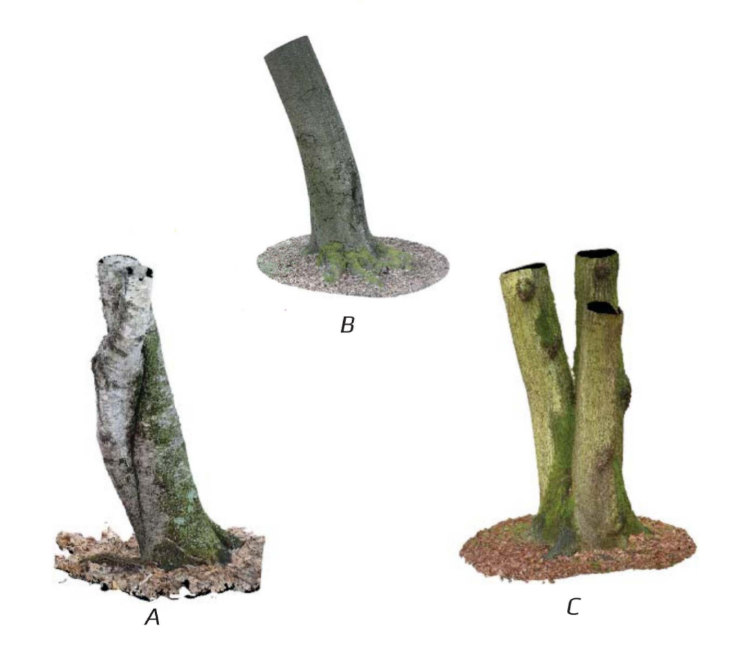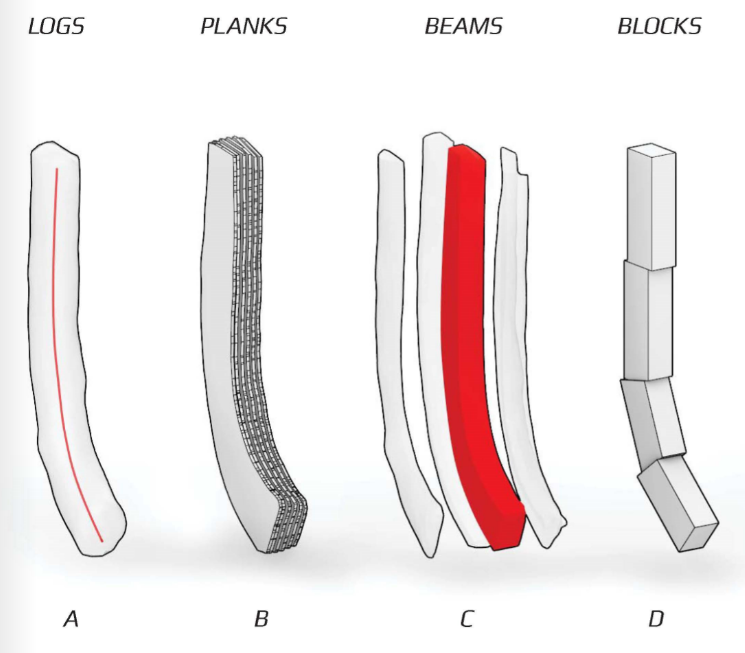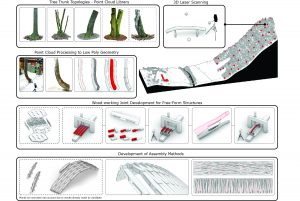RESEARCH DATA
|
PhD Student: Petras Vestartas, architect, IBOIS Thesis director: Prof. Yves Weinand, architect and engineer, IBOIS |
RESEARCH ABSTRACT
The inspiration for the use of timber in its natural form has been taken from nineteenth century French shipbuilding that shows potential in applying naturally grown timber elements for complex curved geometries. Differently to traditional log construction, shipbuilding applied manual fabrication techniques to change irregular tree trunk geometry to non-standard timber element that took advantage of natural characteristics of wood. By selecting trees and creating library of tree characteristics with the help of current laser scanning technologies it is possible to specify tapering parameters, changing curvature and tree surface. Currently such techniques are widely used in automotive industry and building information modelling for checking accuracy of product assembly, but scanning, cutting and assembly used together remains a challenge for one continuous workflow.
Methods for applying tree data for further processing requires understanding how unique tree elements could be composed into free-form structures. Research methodology includes experiments, based on physical prototypes and algorithmic geometry processing tool development. It is planned to start a research project from demonstrators made from solid timber blocks with regards to joinery and machining techniques in order to understand geometric connection configuration following grain direction. Once the setup is applied to geometrically regular timber elements then it will be applied to tapering tree trunk geometries. 3D laser scanning techniques are going to be applied for acquiring solid wood surface and machining setup geometry to guide fabrication tool-path.
Use of timber in its natural form could increase use of natural timber biomass and reduce economic resources for irregular trees that have no value in timber structures.
Curved and bifurcated trees that currently has no value in conventionnal forestry :

a) twisting b) bending (can be used for curved geometry) c) branching (can be used for corner elements)
These figures can actually be used for further geometry processing :
a) Creating mesh surface reconstruction
b) Cutting log to planks
c) Cutting sides of log to obtain beam like element. While keeping bent curve of irregular tree element, it would allow application for curved assemblies
d) Dividing log into straight sub-element in order to have a maximum use of biomass

The main objective of research is to exploit local wood resources and its non-uniform natural characteristics when it is possible without importing timber-engineered products as is currently done. Thanks to digital fabrication and geometry processing techniques such as mesh processing, 5-axis CNC milling and laser scanning it is possible to apply traditional carpentry jointing techniques for custom architectural geometries made from locally sawn solid timber elements.
